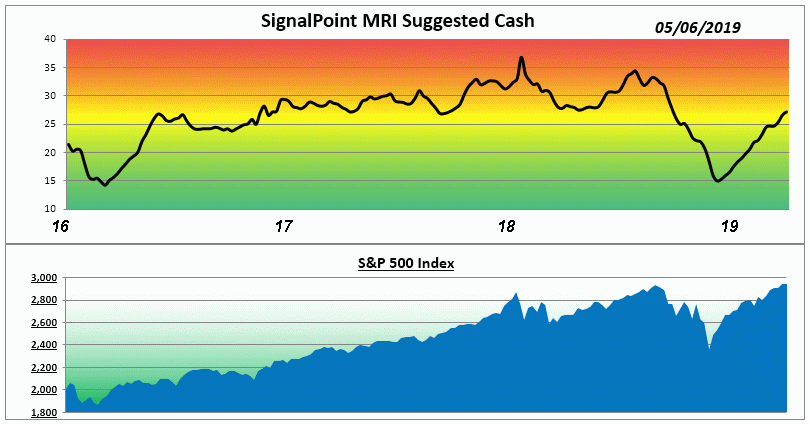From Chief Investment Officer Tom Veale,
“Another week of trading passed with little in the way of change seen. U.S. Small and Mid-Cap Stocks did a bit better than some other segments and most of the international ETFs were slightly up for the week but, other than Brazil on Friday (+5%), nothing exceptional was seen. With this it should be expected that the Market Risk Indicator (MRI) was unchanged for the week at 27% suggested cash in reserve for diversified equity accounts. The MRI Oscillator dropped to +3 showing less upward risk pressure.

This has been occurring even as the S&P 500 tracks to new all-time highs. Two components were unchanged for the week and two were slightly down in risk profile. Separating “Signal” from “Noise” has been one of the primary design goals of the MRI. Inflation worry, trade imbalance and potential tariff hikes are all newsworthy but are just part of the background.
With four components of the MRI neutral and the overall rank neutral as well we do not see anything of immediate concern. Our Relative Valuation Index shows room for a full percentage rise in short term rates before we’d see a bearish signal. Should interest rates stay the same, that would allow for another 5% expansion in the Price/Earnings ratio before we’d see a bearish signal.”
The Market Risk Indicator is an assessment tool that serves as a guide through all markets as to the prudent use of a liquid cash cushion. It helps determine an approximation of the amount of cash reserve relative to a diversified equity portfolio. (this is depicted by the graph above)
At times of high risk in the market, the MRI will suggest a higher level of cash reserve. At times of low market risk, the MRI will suggest a lower level of cash reserve. This investment process helps to measure and manage market risk
Because of this, the fear associated with the uncertainty of the market can be replaced by the security of a sound investment strategy.



